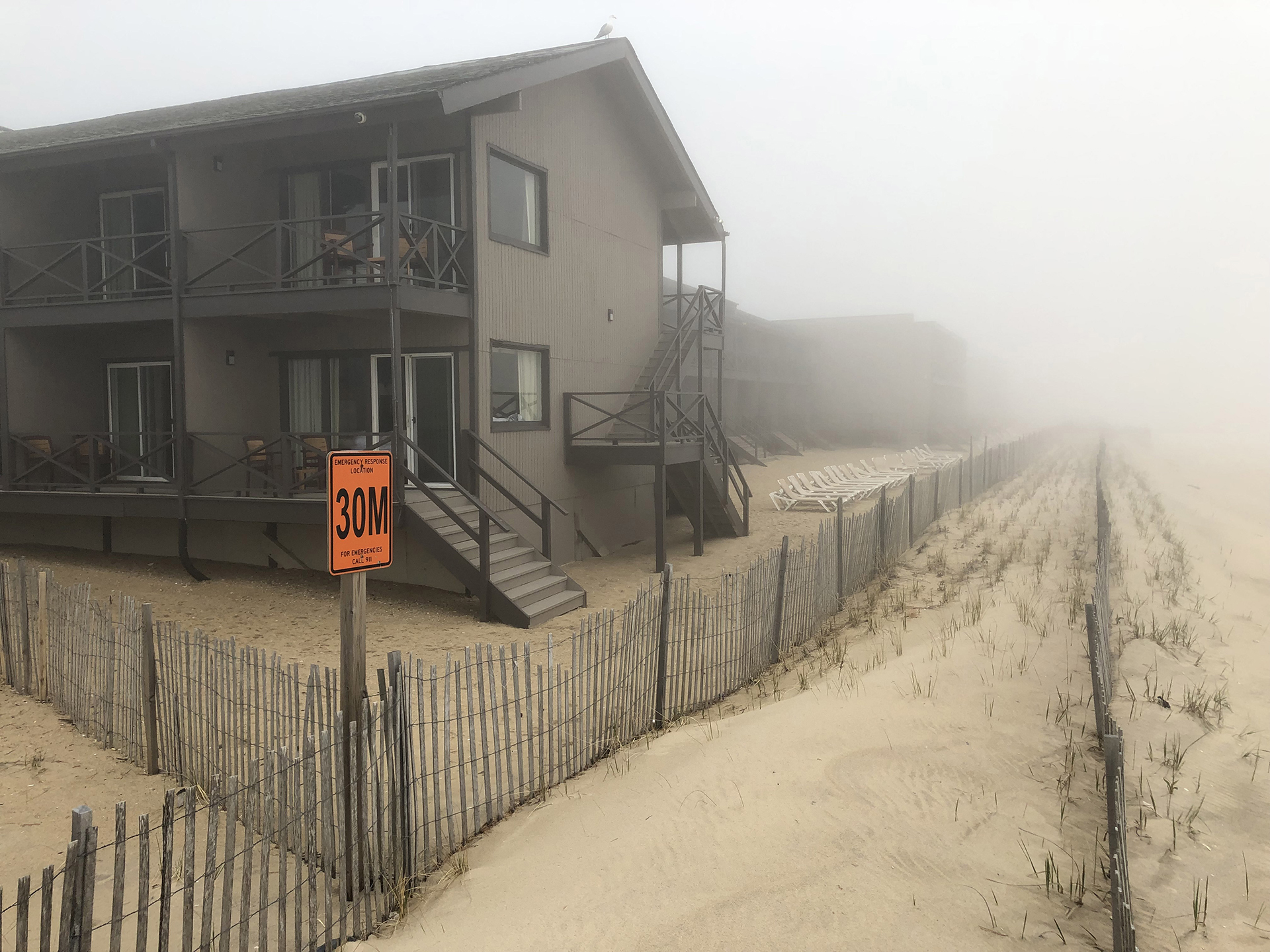Board Trims Montauk Hamlet Study Sails

The East Hampton Town Board took, seemingly, one step forward and one step back as it weighed the Montauk hamlet study at its April 9 meeting. The study, now three years in the making, is supposed to create a long-term vision for both the dock area and downtown Montauk that would be added to the town’s comprehensive plan. That vision would not be binding, but, rather, a decades-out general goal for zoning and planning.
There is a separate study being done for each of the five hamlets — Montauk, Wainscott, Springs, East Hampton, and Amagansett.
But it is the Montauk study that has generated the most controversy. Particularly causing a stir is the plan to create the flexibility in the town code to slowly retreat downtown businesses, especially the motels that were built during the 1950s and 1960s along the beach, many literally over the dunes that would have offered protection in the case of a severe nor’easter or hurricane, back away from the ocean.
That ocean, all acknowledge, is the engine that generates business in downtown Montauk during the summer season. It is also, potentially, the engine of destruction that could damage or even destroy the beachfront in Montauk if a strong enough storm were to hit.
While the study has been progressing through various steps over the past three years, it is over the past few months that opposition to any immediate adoption of a long-term plan for downtown Montauk has crested.
Lisa Liquori, a consultant with the firm Dodson & Flinker, who has been shepherding the study process, spoke to the board at length, with members, in turn, expressing their thoughts.
Councilwoman Kathee Burke-Gonzalez said to Liquori, “We heard from the business community that folks were calling up, saying, ‘Is there a beach? Is there a hotel? We hear that you are retreating.’ And we were going to soften, I guess is the way to put it, that language.”
Board members have repeatedly, over the past few months, tried to assure those in the community who were afraid that there was some movement afoot to use eminent domain to force business owners away from the ocean. Board members have stated, unequivocally, that that is not the case.
“They can make that decision to stay,” Sylvia Overby said April 9 about the motel owners. “And then they can make the decision, if we have a Transfer Development Rights program in place. I don’t know what it is going to look like yet, but if we have it, it can maintain that economic engine that we need for downtown Montauk.”
This week, the town started a beach replenishment project to return sand to the beaches, particularly in the eastern portion of downtown beachfront, where there is a straight drop of about six feet from the top of the Army Corps of Engineers’ artificial dune, down to the sandy beach. In the year 2022, the Army Corps of Engineers Fire Island to Montauk Point project is scheduled to bring another 455,000 cubic yards of sand to downtown Montauk beaches.
Board member David Lys pointed out that there could be a blessing in disguise for those who opt, in the future, to relocate on the north side of South Emerson Street, the road that runs behind the motels facing the ocean. Some of those properties would be in FEMA flood zones, meaning the buildings would have to be raised. Overby suggested that the space underneath the new structures could be used for parking, always a concern in downtown Montauk.
Liquori had shown the board photographs of oceanfront motels in Montauk that had been severely damaged during the 2012 Superstorm Sandy. “Those pictures are really devastating, and it is a really good reminder of what could happen,” Overby said.
Town Supervisor Peter Van Scoyoc said that the images Liquori had shared with them were a vivid reminder “of what we were dealing with in 2012 with Sandy, how for months those foundations were exposed, and swimming pools were laying on the beach.”
Councilman Jeffrey Bragman said, “We want to be cautious before announcing a TDR plan, until we have gone through some of those details. I think a generic environmental impact study is the way to go. My take on it is, I think we are ready to conclude something about the hamlet plan, but I don’t think we are ready to announce a TDR policy without further work.”
Van Scoyoc said that several items in the long-term plan simply need to be scrapped, such as a couple of vehicular roundabouts by the train station. One roundabout that perhaps could remain in the long-term planning process is one near the intersection of Second House Road with Montauk Highway. An eventual path connecting the train station to the town for bikers and pedestrians alike could also be a possible future goal.
The board also talked about the dock area, and the possibility of a walkway along the docks, reminding those in the audience at the Montauk Firehouse, where the board holds a meeting once a month, and those watching at home, that this was a conceptual plan, not something written in stone. Another traffic circle that could appear someday would be at the intersection of Westlake Drive and Flamingo Avenue. The working dock area could be expanded in the plan to include the Gosman’s Dock complex, Van Scoyoc suggested. Affordable housing along Westlake Drive could be a possibility, too, Lys added.
Van Scoyoc returned to concerns about the beachfront. “In any given year, we could suffer a devastating storm.” He concluded, “We need to form a future that we all can be proud of, and we all can support.”
The hamlet studies for East Hampton and Springs were on the agenda for the April 16 meeting.
t.e@indyeastend.com



